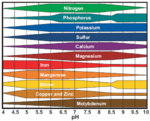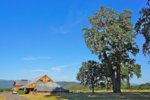Mailman17013
Seed
- Messages
- 3
- Reaction score
- 0
Any advice for fertilizing shimpaku junipers? Do they prefer an acidic fertilizer like Miracid or is something like Green Dream preferable?

Japonicus, I have heard that they do not like a MirAcid or acidic based fertilizer. This was the main reason for my question. Just looking for confirmation on this.
Please see page 12....
http://alabamabonsaisociety.org/blog/wp-content/uploads/2012/04/The-Shimpaku-Juniper.pdf
My shimpaku is the only conifer I withhold “MirAcid” on, since its origin is largely limestone .
I’m sure it can evolve to accept some and now and then should not damage a strong plant
but it gets left out of my rotation.
I recall you mentioning that you use acid fert to compensate for your tap pH. I also have city water at around 8 pH. I am thinking about trying a more acidic fert ball/teabag mix. I am trying to find out if this is needed: Have you measured your runoff pH before vs after the acid regime? Curious if your acid regime is measurable in your runoff.I think you misunderstand what that PDF is saying. In the presence of limestone soils, a conifer's impact on increasing acidity is offset. Limestone soils will remain more alkaline. If you take a wild collected tree from an area of alkaline soil, and transplant it into an acidic soil mix, the tree will struggle in the short term - probably regardless of species. I collect junipers from the desert where this impact is well-known - it is a quick way to kill an already stressed tree.
I have no idea what pH your soil is, or for that matter how much rain you use, or the pH of any irrigation water you use. THAT is what determines whether or not you should use acid fertilizer. I own over 50 shimpakus, as well as numerous other types of junipers. However what works for me may not work for you. Likewise... what works for trees in nature may not work for a cultivated tree, 100 years later, in a container.
You’re right. Also, the shimpaku we use, unless imported from such as the pdf are cuttings or layered forI think you misunderstand what that PDF is saying. In the presence of limestone soils, a conifer's impact on increasing acidity is offset. Limestone soils will remain more alkaline. If you take a wild collected tree from an area of alkaline soil, and transplant it into an acidic soil mix, the tree will struggle in the short term - probably regardless of species. I collect junipers from the desert where this impact is well-known - it is a quick way to kill an already stressed tree.
I have no idea what pH your soil is, or for that matter how much rain you use, or the pH of any irrigation water you use. THAT is what determines whether or not you should use acid fertilizer. I own over 50 shimpakus, as well as numerous other types of junipers. However what works for me may not work for you because of this reason. Likewise... what works for trees in nature may not work for a cultivated tree, 100 years later, in a container.
I recall you mentioning that you use acid fert to compensate for your tap pH. I also have city water at around 8 pH. I am thinking about trying a more acidic fert ball/teabag mix. I am trying to find out if this is needed: Have you measured your runoff pH before vs after the acid regime? Curious if your acid regime is measurable in your runoff.
Thanks, I'm hesitant to start testing runoff and chasing pH... Worried it'll be Pandora's can of worms or something lol.It is very definitely measurable. I try to be as consistent as possible and use the same amount of acid fertilizer, each month, per tree, but the soil pH fluctuates. In months when we are getting a lot of rain, I don't use it. Also, our water pH changes during the year. In the winter it is about 8.0 and in the summer it is higher - about 8.5. That's why I say I try to keep the pH in the 6.0 - 7.0 range. I was initially worried that swings in pH were going to harm the tree, but I haven't noticed any negative impact. If you are concerned I would just start with a lower application rate and work up from there.
Thanks, I'm hesitant to start testing runoff and chasing pH... Worried it'll be Pandora's can of worms or something lol.
My plan is to switch to hollytone from plant tone in my Tea bags... If the runoff calls for it.

Kinda ironic lol.unable to keep citrus healthy in Orange County
Kinda ironic lol.
Don't get me started on oaks lol. White Oak was one of the species I studied, along with post Oak, live Oak, and chinkapin Oak. I was focusing on above-ground chemistry, so other than soil moisture, I ignored most soil parameters.

That's a beautiful view and capture
Now that is called PARADISEAny work with Valley oaks? They aren't an east coast species, but I'm starting to mess around with them and really like them. Same soft lobed leaves as white oak, and deciduous, but I can at least keep them alive down here. Tallest oak in the US is a Valley oak - they are growers!
View attachment 240238
Nope, I had never heard of them until Brent mentioned them a while back. Very limited natural range. Have you grown them in containers?Any work with Valley oaks? They aren't an east coast species, but I'm starting to mess around with them and really like them. Same soft lobed leaves as white oak, and deciduous, but I can at least keep them alive down here. Tallest oak in the US is a Valley oak - they are growers!
View attachment 240238
